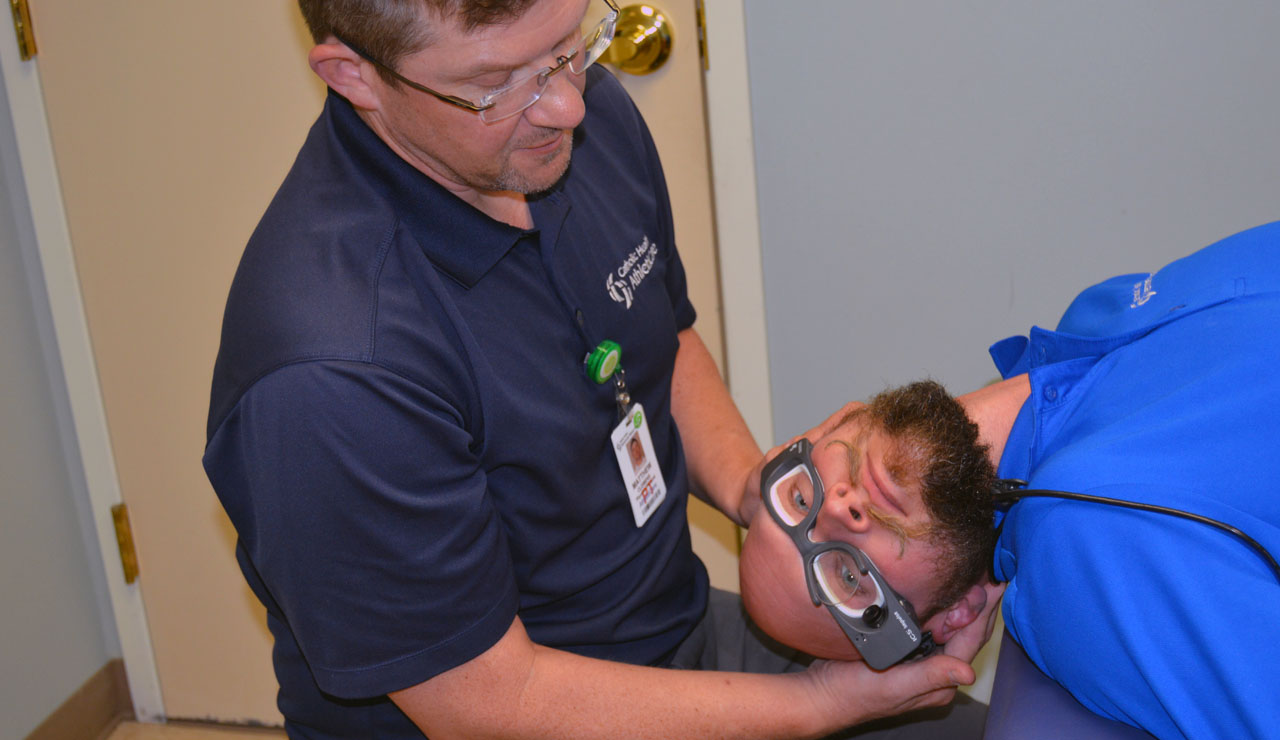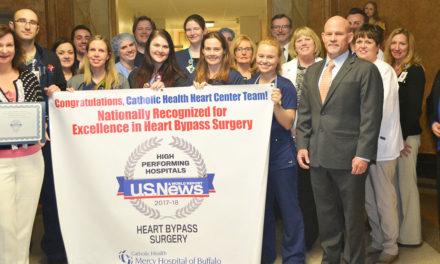High-definition Goggles Helping Diagnose Vertigo Issues

Imagine the room whirling. You can’t focus, your knees buckle, and you’re overcome with nausea.
However, it’s not a stroke or a heart attack. In many cases, that feeling is caused by a problem with the body’s vestibular system or inner ear.
Using specialized goggles to evaluate abnormal eye movements the physical therapists at AthletiCare, a department of Kenmore Mercy Hospital, are able identify issues within the balance system quicker.
One of a only a few groups locally to own and use the high-definition goggles manufactured by Otometrics – Audiology Systems, AthletiCare’s physical therapists are able to determine if a person’s dizziness and imbalance is due to positional vertigo or other vestibular issues.
The goggles use high resolution camera technology to magnify and record the smallest of eye movements to determine the type and extent of the balance issue.
“This information, along with a complete vestibular evaluation, helps us to determine the cause of the vertigo and to determine an appropriate course of treatment. Many issues can be resolved through physical therapy techniques, and resolved in two to three visits,” said Matthew Clemens, PT, Cert. MDT.
The condition can be diagnosed, and usually treated, with a series of head movements. The therapeutic maneuvers reposition misplaced calcium crystals — a good thing because the debilitating episodes tend to recur.
In addition to vertigo, dizziness, and imbalance, some experience visual disturbance, nausea and/or vomiting, reduced ability to focus or concentrate, and fatigue. This is because the intricate vestibular system provides sensory information to our body about balance, equilibrium and spatial orientation.
“Every person is different but the goal is the same—to alleviate the feelings of dizziness, imbalance and/or vertigo and help the patient regain competence and confidence in his or her balance abilities without a fear of falling,” Clemens added.
The goggles were purchased through a $2,500 grant from the Kenmore Mercy Foundation.




